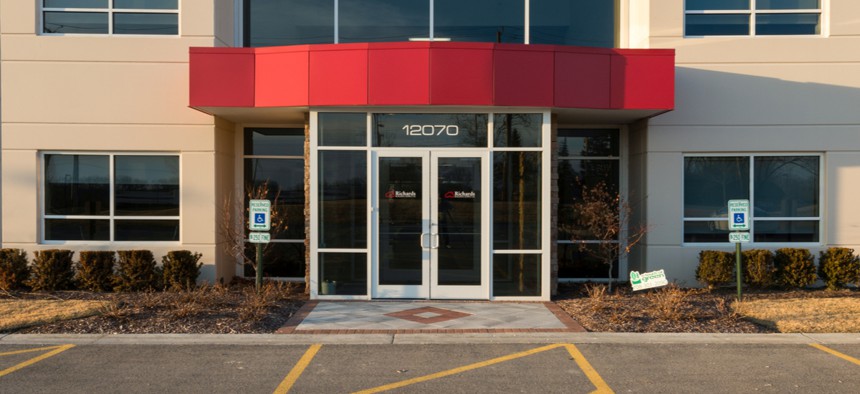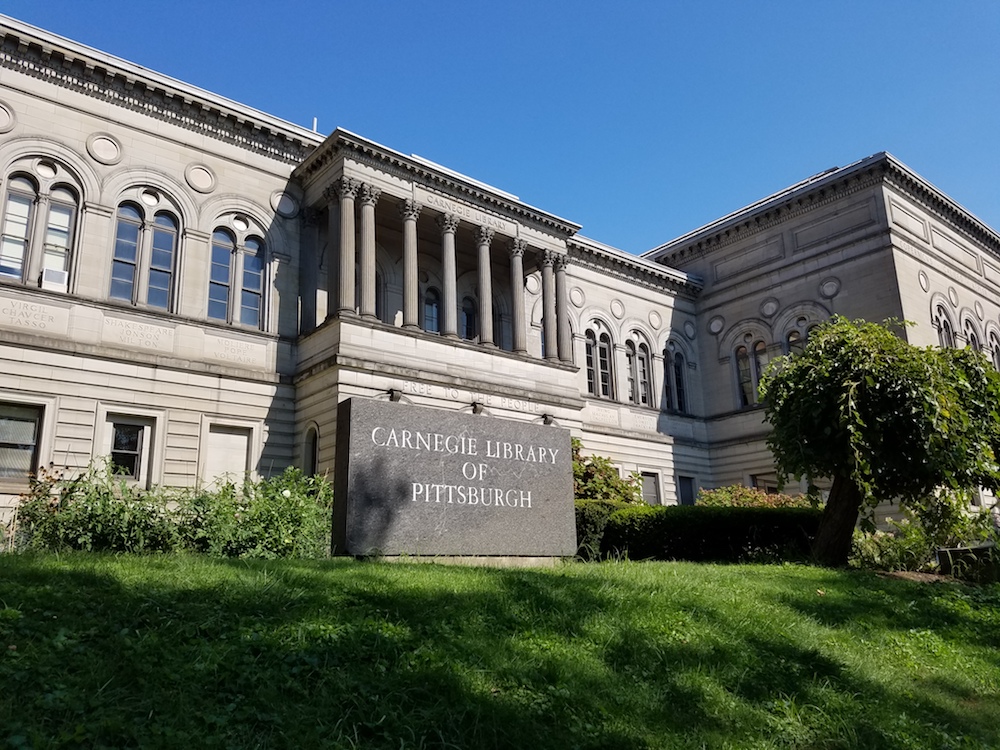These Days, ‘We Aren’t Innovating in Isolated Business Parks’

An office park in the suburbs of Chicago. Shutterstock
“Smart, long-term bets” are vital for economic development, according to Bruce Katz, centennial scholar at the Brookings Institution. And those bets are best when clustered in revitalizing cities.
SAN ANTONIO — While Amazon’s high-profile search for a city to host its second headquarters campus wasn’t the focus of Bruce Katz’s widely attended discussion at the International City / County Management Association’s annual conference on Tuesday—the Brookings Institution’s centennial scholar gave the audience a preview of his forthcoming book, “The New Localism: How Cities Can Thrive in the Age of Populism”—it did come up briefly and was certainly timely and relevant.
Cities and metropolitan areas across North America bent over backwards in recent weeks to put together bid packages in efforts to land Amazon’s so-called HQ2, the 50,000 jobs that are promised to go with it and the economic development boom that’s expected.
Amazon laid out a checklist for what it’s looking for, including a city with a metropolitan population of at least 1 million residents, proximity to an airport with good connections to its homebase in Seattle, good public transit, a pipeline of local tech talent, and a local environment that will foster the type of innovation that’s flourished at its original and still-growing urban campus in the Emerald City.
Much has been written about what Amazon is looking for and the extent some cities and regions have gone to make their bids attractive to the company, including offering tax incentives and land to build on. So while the competition to land the HQ2 would seem very much about what a city or metro area can build to foster Amazon’s future, it’s also very much about what a city or metro area has already built or the local investments made over many years.
“It’s not about throwing tax incentives at people,” Katz said of economic development in today’s innovation- and tech-focused economy.

He pointed to Pittsburgh as a place that has successfully leveraged its local assets, including its academic institutions, to make “smart, long-term bets” to become the “poster child for post-industrial renewal.”
Katz touted the clustering of brainpower in Pittsburgh’s Oakland neighborhood, home to the University of Pittsburgh, the University of Pittsburgh Medical Center and Carnegie Mellon University. There are other examples of this type of clustering elsewhere in the United States, something that’s supported vibrant economic activity not just in the immediate vicinity, but across the city and metropolitan area.

“The 21st century has revalued these small geographies. That’s what the 21st century demands,” Katz said, noting that these days, “[w]e aren’t innovating in isolated business parks” in the suburbs.
This “new geography of innovation,” as Katz described it, stands in contrast to what some of the cities and metro areas drooling over the prospect of landing Amazon’s HQ2 were planning to offer in their bid packages ahead of the submission deadline earlier this month.
In the Detroit area, Oakland County Executive L. Brooks Patterson offered up four sites in his sprawling suburban jurisdiction—the vacant Northland Mall, the site of the former Pontiac Silverdome, the now shuttered Palace of Auburn Hills and the former K-mart headquarters—as locations that Amazon could utilize as part of a larger Detroit bid. It’s important to note that the lack of any meaningful transit investments in the Detroit area over many generations would seem to put it at a disadvantage compared to some of the other strong contenders, especially Boston, which many see as a frontrunner. An economy based on auto-centric suburban sprawl may have worked for the Detroit area previously, but in hindsight, that legacy approach may prove to be a liability.
“In the end, the city has to think like a system [and] connect the dots,” to foster the type of innovation that’s driving economic revitalization in cities. That doesn’t mean simply physical connections, but also cross-sector collaborative efforts where municipal governments work with other local stakeholders, including universities, the business community, non-profit organizations and philanthropies to pursue a common vision that leads to ongoing revitalization and economic growth.
That’s one of the reasons why Pittsburgh was among of the first names to be touted as a likely strong contender for Amazon’s HQ2.
“Be an ecosystem, rather than an ego-system,” Katz told the ICMA audience, borrowing a line from Chris Cabaldon, the mayor of West Sacramento, California.
Michael Grass is Executive Editor of Government Executive’s Route Fifty and is based in Seattle.
NEXT STORY: Are wearables reliable enough for public safety?






